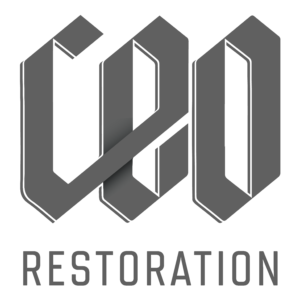Unbeknownst to many, mold is a ubiquitous part of our environment. It can be found both indoors and outdoors, and while some forms of mold are harmless, others can pose health risks. Unfortunately, misconceptions and myths about mold abound, leading to confusion and unnecessary alarm. In this comprehensive article, we will debunk common mold myths, provide accurate information, and empower you to make informed decisions regarding mold-related issues. So let’s dive in and separate fact from fiction!
Common Mold Myths Debunked: Separating Fact from Fiction
Mold can be a complex and puzzling subject, surrounded by numerous misconceptions. To clarify matters, we have compiled a list of the most prevalent mold myths and debunked them with reliable information. Let’s shed some light on these misunderstandings:
1. Myth: Mold Only Grows in Dirty and Neglected Places
Mold has no prejudice when it comes to cleanliness. It can thrive in both immaculate and unkempt environments. The main factors that promote mold growth are moisture, warmth, and organic material. Hence, even well-maintained spaces can experience mold problems if moisture levels are not adequately controlled.
2. Myth: Mold is Harmless and Has No Health Effects
Contrary to this myth, certain molds can indeed have adverse health effects. Mold spores can trigger allergies, respiratory issues, and even more severe conditions in susceptible individuals. Prolonged exposure to mold can be particularly problematic, so it’s crucial to address mold issues promptly.
3. Myth: Bleach Can Effectively Remove Mold
While bleach is often seen as a remedy for mold, it is not entirely effective. Bleach may remove visible mold growth on non-porous surfaces temporarily, but it fails to address the underlying problem. Additionally, bleach is not suitable for porous materials, as it cannot penetrate deep enough to eradicate mold growth.
4. Myth: Mold is Only a Problem in Wet Climates
Although mold thrives in moist environments, it can develop in any climate. High humidity levels, water leaks, and condensation can create ideal conditions for mold growth, regardless of the climate you live in. It’s essential to take preventive measures regardless of your geographical location.
5. Myth: Mold is Easy to Detect
Mold can be sneaky and hide in inconspicuous areas. It often grows behind walls, under carpets, or in dark and damp spaces, making it challenging to spot. Musty odors, unexplained health symptoms, or visible signs of mold growth should prompt further investigation to identify potential mold issues.
6. Myth: Painting Over Mold Will Solve the Problem
Painting over mold is merely a temporary solution and does not address the root cause. Mold can continue to grow beneath the paint layer, eventually surfacing again. It is crucial to identify the source of moisture, remediate the mold, and ensure proper ventilation before considering any cosmetic fixes.
Conclusion
Separating fact from fiction is crucial when it comes to mold. By debunking common mold myths, we have shed light on the reality of mold-related issues. Mold can be a serious concern, with potential health effects and structural damage if left unaddressed. Remember that mold growth can occur in any environment if the conditions are right. Promptly addressing moisture issues, seeking professional help when needed, and implementing preventive measures can help you combat mold effectively.
Don’t let misconceptions about mold misguide you. Stay informed, take proactive steps to prevent mold growth, and seek professional assistance when necessary. By doing so, you can protect your health and maintain a mold-free environment.
FAQs About Mold: Common Mold Myths Debunked
- Can mold cause serious health issues?
Yes, certain types of mold can cause health problems, especially for individuals with allergies or respiratory conditions. Prolonged exposure to mold can lead to symptoms such as coughing, sneezing, wheezing, and even more severe reactions in susceptible individuals.
- How can I prevent mold growth in my home?
To prevent mold growth, it’s important to control moisture levels. Keep your home well-ventilated, fix any leaks promptly, and ensure proper insulation to prevent condensation. Regularly clean and dry areas prone to moisture, such as bathrooms and kitchens, and consider using dehumidifiers in humid climates or moisture-prone areas.
- Is black mold the most dangerous type of mold?
The term “black mold” often refers to Stachybotrys chartarum, which has gained a reputation for being extremely toxic. While Stachybotrys can produce mycotoxins that may have health effects, it is essential to note that all molds have the potential to cause health issues. Identifying the type of mold present is best left to professionals.
- Can I remove mold on my own, or should I hire professionals?
Small areas of mold growth on non-porous surfaces can sometimes be safely remediated by homeowners using appropriate precautions and cleaning agents. However, it’s recommended to hire professionals for extensive or recurring mold problems, mold growth on porous materials, or if you have health concerns. Professionals have the expertise and equipment to handle mold remediation effectively.
- Are all molds visible?
No, not all molds are visible to the naked eye. Mold can grow behind walls, in air ducts, or other hidden areas. If you suspect mold but cannot see it, you may consider professional mold testing or inspection services to identify the extent and location of mold growth.
- Can mold come back after remediation?
Mold can reappear if the underlying moisture issue is not addressed. Remediation should involve identifying and fixing the source of moisture, ensuring proper ventilation, and implementing preventive measures. A thorough remediation process significantly reduces the chances of mold returning.





